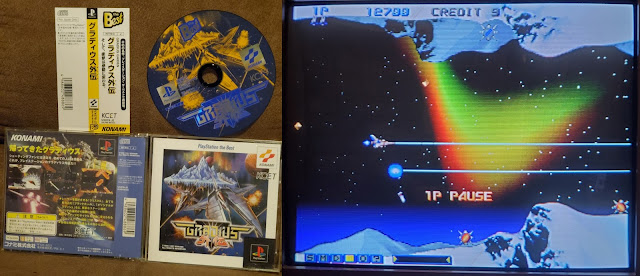Collection essentials #361: Harmful Park (PS1)

Here’s a console-exclusive shoot ‘em up by an obscure developer called Sky Think Systems that only ever made two other video games. Harmful Park is a type of shoot ‘em up commonly called a “cute ‘em up” due to its aesthetics and setting. Easily comparable to Parodius, Harmful Park definitely embraces silliness and that’s part of its charm. The setting of the game, as the title implies, is a theme park, and the story involves an evil scientist who has taken over the park and twisted it into something dangerous while the player characters, a pair of sisters with flying combat vehicles, set out to stop him. Story doesn’t matter much in shoot ‘em ups, but Harmful Park actually bothered to have cutscenes with voice acting for a more impressive presentation. The game takes place in the year 2017, which was 20 years into the future at the time of the game’s initial release but of course nowadays is falling further and further into the past. Harmful Park delivers very nicely in the gamepl...










